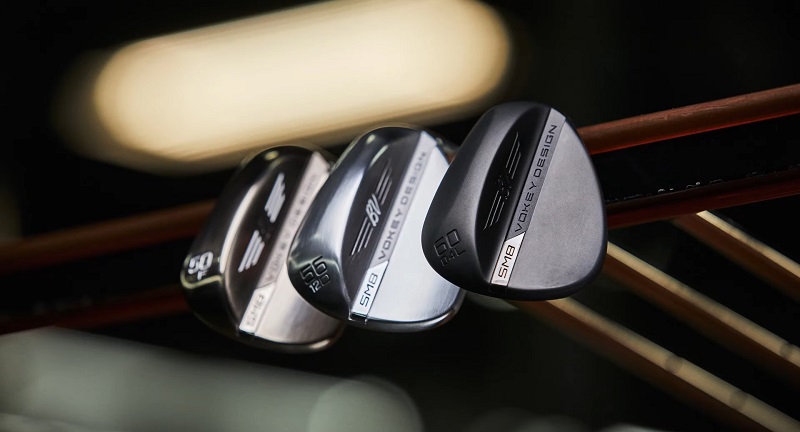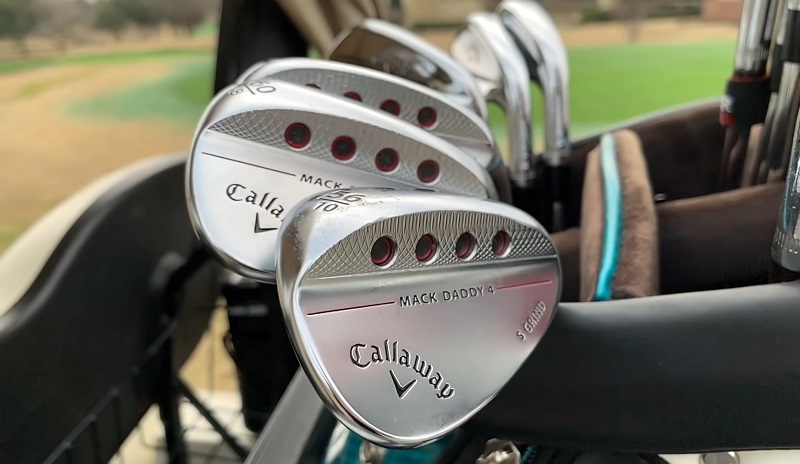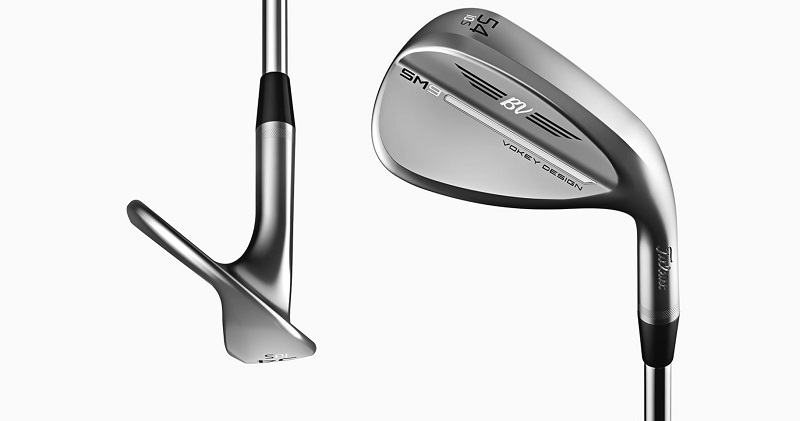Golf is a sport that requires players to use a variety of clubs to navigate the course, and one of the most crucial shots in the game is the wedge shot. Wedge shots are typically used for shorter shots that require a higher trajectory and softer landing, such as shots onto the green or out of bunkers.
Selecting the right wedge for a shot is crucial to the shot’s success, as the club’s loft and bounce can greatly affect the trajectory and distance of the ball. Pitching, gap, sand, and lob wedges are all types of wedges that are commonly used by golfers, each with its own specific characteristics and uses.
In this guide, we’ll take a closer look at these different types of wedges and the loft ranges associated with them, as well as the importance of matching the right wedge to the shot at hand. Whether you’re a beginner looking to improve your short game or a seasoned player looking to fine-tune your wedge selection, this guide will provide you with valuable information on pitching and wedge shots in golf.
Loft and Bounce In Wedges

Wedge lofts and bounce are two critical factors that determine the trajectory, spin, and distance of your shots. Loft refers to the angle of the clubface about the shaft. The higher the loft, the higher the ball will launch into the air. Bounce, on the other hand, refers to the angle between the leading edge of the clubface and the ground. It affects the amount of turf that the club will interact with and the level of resistance to digging.
There are four types of wedges – pitching, gap, sand, and lob – each with a different loft angle and specific purpose.
- Pitching wedges typically have lofts ranging from 44 to 48 degrees.
- Gap wedges, also known as approach or utility wedges, have lofts ranging from 50 to 52 degrees.
- Sand wedges have lofts ranging from 54 to 58 degrees.
- Lob wedges have the highest lofts, typically 58 to 64 degrees.
How Important Is The Combination Of The Loft And The Shot?
Matching the loft of your wedge to the shot you aim to hit is crucial. Choosing the wrong loft can lead to a shot that falls short or overshoots the green. When selecting a wedge, take into account factors such as the distance to the hole, the shot type you want to execute, and the course conditions.
The appropriate loft can help you launch the ball higher or lower, spin it more or less, and bring it to a stop quickly on the green. Furthermore, the bounce angle of the wedge has an impact on the shot’s trajectory and spin, emphasizing the importance of choosing a wedge with the appropriate bounce for the course conditions and your swing style.
What Are Pitching Wedges?
A pitching wedge is a type of wedge club used in golf, It is designed to provide a higher and shorter ball flight than longer irons and is usually the lowest lofted wedge in a golfer’s bag. The club head of a pitching wedge is typically larger than other irons, allowing for greater forgiveness and easier ball striking.
The pitching wedge is a versatile club that can be used for various shots, making it an essential club for golfers of all skill levels. It is commonly used for approach shots from around 100-130 yards but can also be used for full swings from the fairway or rough. Pitching wedges are also useful for chipping around the green and getting out of bunkers. Its relatively low loft angle allows golfers to achieve more roll on the green, making it a great option for bump-and-run shots as well. Overall, the pitching wedge is an important club that can help golfers improve their short game and lower their scores.
Degrees of Pitching Wedges
As I mentioned earlier, the loft angle of a pitching wedge typically ranges between 44 to 48 degrees, with most models falling within this range. The loft angle can vary depending on the brand and model of the club, and it’s important to select one that suits your swing and shot preferences. A higher lofted pitching wedge will result in a higher ball flight, while a lower loft will provide more distance.
What Are Gap Wedges?

A gap wedge, also known as an approach or utility wedge, is a type of golf club that falls between the pitching wedge and sand wedge in terms of loft angle. It is designed to bridge the distance gap between these two clubs, hence the name “gap wedge.”
This wedge is a versatile club that can be used for various shots. Its most common use is for approach shots that require a high trajectory with a soft landing, especially from distances where a full swing with a pitching wedge would be too much and a sand wedge would not be enough.
It can also be used for chipping around the green or even putting in certain situations. Some golfers even use a gap wedge for bunker shots, although this depends on the course conditions and personal preferences.
Degrees of Gap Wedges
The loft of a gap wedge usually falls between 50 and 54 degrees. This makes it ideal for approach shots from a distance of about 80-100 yards, depending on the golfer’s swing speed and other factors.
What Are Sand Wedges?
A sand wedge is a type of golf club designed to help players hit shots out of bunkers or sand traps. This wedge has a unique shape, with a wide sole and a flange on the back of the club head.
As the name suggests, sand wedges are primarily used for shots from sand bunkers. The club’s wide sole and high bounce angle allow it to slide through the sand without digging in, helping to create a consistent, smooth shot. Sand wedges can also be used for other shots around the green that require a high, soft landing, such as flop shots or shots over hazards. With its high loft, a sand wedge can produce many backspins, which can help the ball stop quickly on the green.
Degrees of Sand Wedges
Sand wedges typically have a loft range of 54 to 58 degrees. The higher loft angle helps to create more backspin and a higher trajectory, making it easier to get the ball out of the sand and onto the green.
What Are Lob Wedges?
A lob wedge is a type of wedge that has the highest loft angle among all wedges, typically ranging from 58 to 62 degrees. It has a very steep angle on the clubface that allows golfers to hit high, soft shots with many spins.
Lob wedges are primarily used for short shots that require a high trajectory, such as shots over hazards or bunker shots with little green to work with. They can also be used for delicate chips around the green or to stop the ball quickly on a fast green. However, lob wedges require much skill to use effectively and are not recommended for beginners or high-handicap players.
Degrees of Lob Wedges
The typical loft range for a lob wedge is 58 to 62 degrees. This high loft allows for short shots with a high trajectory and many spins, making it ideal for shots where you need to carry the ball over an obstacle or stop it quickly on the green.
How To Choose The Right Wedge For Different Shots?

Choosing the right wedge for different shots involves considering several factors, including the distance to the hole, the type of shot you want to hit, and the course conditions. Here are some general guidelines to follow:
Determine the distance to the hole: The first step is to determine the distance to the hole. This will help you decide which wedge to use.
Consider the shot type: Different wedge shots require different types of swings. For example, a pitch shot requires a higher trajectory, while a chip shot requires a lower trajectory.
Consider the course conditions: The condition of the course can also affect your choice of a wedge. If the greens are firm and fast, you may want to use a lower-lofted wedge to keep the ball from spinning too much. If the greens are soft and slow, you may want to use a higher-lofted wedge to generate more spin and control.
Match the loft to the shot: As we discussed earlier, it’s essential to match the loft of your wedge to the shot you’re trying to hit. Using the wrong loft can result in a shot that comes up short or flies over the green.
Practice and experiment: Finally, the key to choosing the right wedge for different shots is to practice and experiment. Spend time on the practice range, hitting different shots with different wedges. Over time, you’ll develop a better feel for which wedge to use in different situations.
Conclusion
Selecting the right wedge for different shots is crucial for improving your short game and overall performance on the course. Understanding the different lofts and bounces of each wedge and matching them to the shot at hand can help you hit the ball higher or lower, spin it more or less, and stop it quickly on the green. By using the right wedge for each shot and adjusting your technique as needed, you can make more accurate and consistent shots and lower your scores.
Pitching and wedge shots are some of the most versatile shots in golf, allowing players to hit the ball from various lies and distances with precision and control. By mastering these shots and learning to select the right wedge for each situation, you can add a valuable tool to your golf game and improve your overall performance on the course. So, don’t overlook the importance of your wedge selection and practice your wedge shots to elevate your golf game.
Q&A Section Addressing Common Questions About Loft
How Do I Know Which Type Of Loft Is Best For Different Shots?
Pitching wedges are used for shots from around 100-130 yards. Gap wedges are used for mid-range shots from 80-110 yards. Sand wedges are essential for bunker shots and other shots that require a high, soft landing. Lob wedges are used for shots that require a high trajectory, such as short shots over hazards or bunker shots with little green to work with. Knowing which type of loft is best for different shots can help you become a more confident player.
What Is The Difference Between Pitching, Gap, Sand And Lob Wedges?
Pitching wedges have the lowest loft angle and are designed for pitching shots from close distances, such as pitching out of bunkers or rough. Gap wedges provide the perfect balance between loft and distance, making them great for mid-range shots. Sand wedges are essential for escaping sand traps and other difficult lies. Lob wedges have the highest loft angle and are perfect for hitting short, high shots from close distances.
How Can I Improve My Game By Selecting The Right Wedges For My Bag?
Having the right pitching, gap, sand and lob wedges in your bag can make a huge difference in shooting lower scores. Knowing which type of loft is best for different situations can help you become a more confident player and improve your game. Investing in specialty wedges, such as flop and pitching wedges with higher lofts, can also help you have greater control over your shots.
Should I Pitch With A Sand Wedge?
While it’s possible to pitch with a sand wedge, it’s not typically the best option. Sand wedges are designed with a high loft, which makes them ideal for bunker shots and other shots that require a high, soft landing. Instead, you may want to consider using a pitching wedge or a gap wedge for pitching shots. Pitching wedges have a lower loft than sand wedges and are designed to produce a lower, more penetrating trajectory. Gap wedges can also be a good option for pitching shots, as they typically have a loft between that of a pitching wedge and a sand wedge.
What 3 Wedges Should I Carry?
As a general guideline, it is recommended that golfers carry at least three wedges in their bag – a pitching wedge, a gap wedge, and a sand wedge. Having these three wedges in your bag can provide you with versatility and options for short-game shots, allowing you to select the wedge best suited for the specific shot you need to hit.


